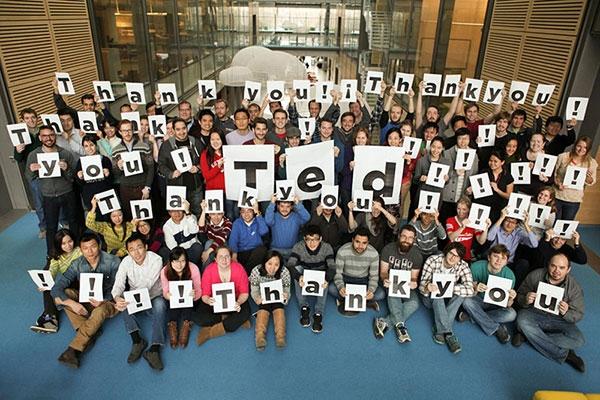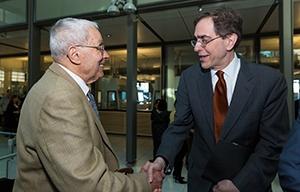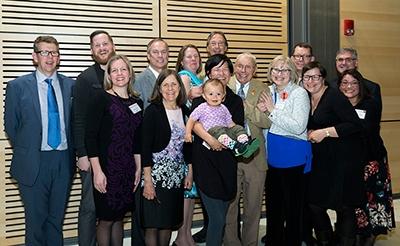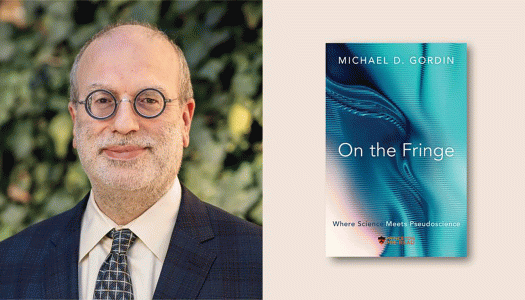From Butterflies to Tomorrow’s Chemists: Professor Emeritus Ted Taylor Helps Discovery Take Flight
In his four decades on the Princeton faculty, Ted Taylor earned the admiration of his students and colleagues for his cheerful nature and commitment to rigorous research. Even in retirement, he has continued to support and shape new generations of scientists by establishing the Edward and Virginia Taylor Professorship in Bioorganic Chemistry and the Edward C. Taylor Fellowships for third-year graduate students in chemistry. The fellowships allow Princeton to fund students for three years—a rarity in higher education—freeing them from the need to tie their research interests to grant support.

On April 5, the University celebrated Taylor’s contributions to teaching and research with a symposium and reception in his honor. Taylor, who is the A. Barton Hepburn Professor of Organic Chemistry Emeritus, talked with Tom Muir, chair of the Department of Chemistry and the Van Zandt Williams Jr. Class of 1965 Professor of Chemistry, about the impact his generosity will have, and the freedom Taylor had at Princeton to work “way out in left field,” exploring the properties of butterfly wings, which eventually led to the development of Alimta, a cancer-fighting drug.
Can you talk about the conversations you had with each other that led to this gift to fund graduate students’ third year?
Professor Taylor: Tom asked me what I thought of the idea. I got very excited because Tom was so excited about what it would do for graduate students at a critical time of their career. We weren’t aware of any other school that had done this and the concept of Princeton being a pioneer in this would make it a very attractive place.
Dr. Muir, why did you have this idea of funding third-year graduate students to begin with?
Professor Muir: When I took over as chair, I knew there are three things that a department needs to be excellent. You need a fantastic building. You need a fantastic faculty. We have those things, and with Ted’s gift for a professorship we will be able to enhance that even more. The third thing you need are world-class graduate students, because they do all the work. So when I came here, I was thinking, what can I do to make a difference? Within days of my first mentioning the fellowships to Ted, he called me back. I just planted the seed and the rest is Ted. He just understood and got behind it.
Why fund the third year and not the fourth or fifth?

Professor Muir: The third year is the engine house of the PhD. They’ve done their classes in their first year. They’ve done their teaching in the second year—which is extremely important for their development. Their third year is when they’ve got to get their research moving. The fewer distractions they have from doing research, the better. But there are students who are forced to teach their third year because their faculty advisor might not have secured enough grant funding due to tightening budgets in federal agencies.
Professor Taylor: I remember being a junior faculty member. It’s a tough time of life. You’ve got to write grant proposals. And in the current climate that means you’ve got to have results to justify people giving you money to carry out your ideas. The graduate students might gravitate in the direction of being certain that the person they choose as an advisor has a sufficient number of research grants to fund them.
How will this fellowship funding impact the research of faculty members?
Professor Muir: It allows faculty members to redeploy money that would otherwise go to support the graduate students. A fair chunk of every hard-earned research dollar from a federal agency goes to graduate students’ stipend and tuition. With those extra resources a faculty member can do that big experiment, the really crazy one that is going to win you the Nobel Prize. You can buy that bit of equipment that you need to do the key experiment. Everybody really benefits from Ted’s gift, not just the students, because everybody in the department will have access to that equipment.
What most stands out in your mind about your time here?

Professor Taylor: It was fun. The whole experience of being here and having all these wonderful students and postdocs and the like—I loved it! I was free to do the things that I really got excited about. And that’s a freedom that is impossible in industry. I was pursuing results in a field that was not considered hot or extremely important at the time, namely heterocyclic chemistry. I was working on the pigments in the wings of butterflies. As a consequence I was an oddball, working way out in left field.
Professor Muir: That is a great point because I think it comes back to the flexibility that Ted’s gift provides. It gives people the ability to just follow their noses, wherever it takes them. It might take them to Alimta; it might take them somewhere else. The key thing is that people do things that are original and innovative. And sometimes the federal agencies don’t fund that stuff because it’s too out there.
I understand that you started college intending to major in English and loved to write. How did a humanist at heart become a distinguished research chemist?
Professor Taylor: I had not had any meaningful science in high school. I took physics and it was horribly taught. When I got to Hamilton College, there was a distribution requirement so I had to take some science courses. There were only two courses available at the time: biology and chemistry. I flipped a coin. I still remember it was a nickel. And it came down for chemistry. I fell in love with chemistry from the very first lecture. I took introductory chemistry, analytical chemistry, and then organic chemistry. I ran out of chemistry courses at Hamilton, so I transferred to Cornell. Thank heavens I did, because that’s where I met my wife.
How does it feel to know that your name will forever be associated with Princeton’s chemistry department—through your endowed professorship, the fellows program, and the Frick Laboratory’s commons and auditorium that bear your name?

Professor Taylor: I’m a little embarrassed by it. I’m not doing this to have my name spread around; I’m doing it because it’s the way the cookie crumbled. I didn’t start out trying to find a cancer drug. Not at all. I was just exploring the chemistry of these beastly chemical compounds with a two-ring structure that had been found in the wing pigments of butterflies. I admit that it’s nice, but anybody who knows how things are done when one accomplishes something like Alimta realizes that a lot of people contributed in all sorts of ways.


